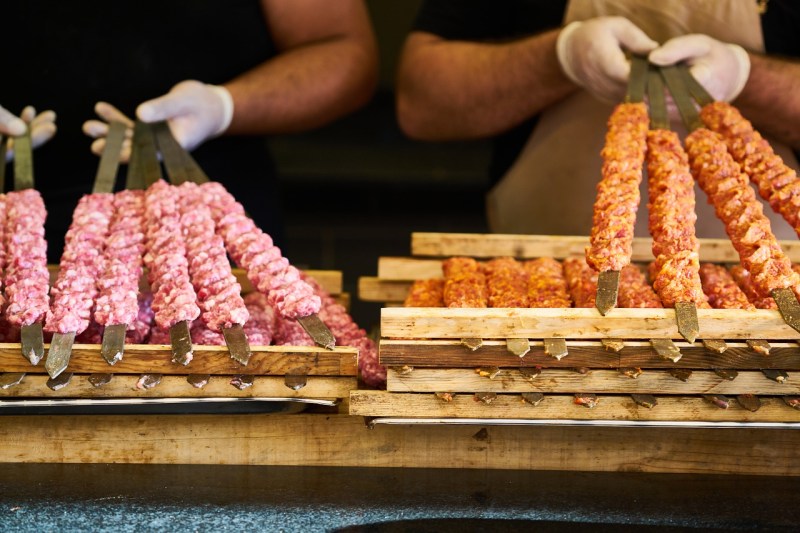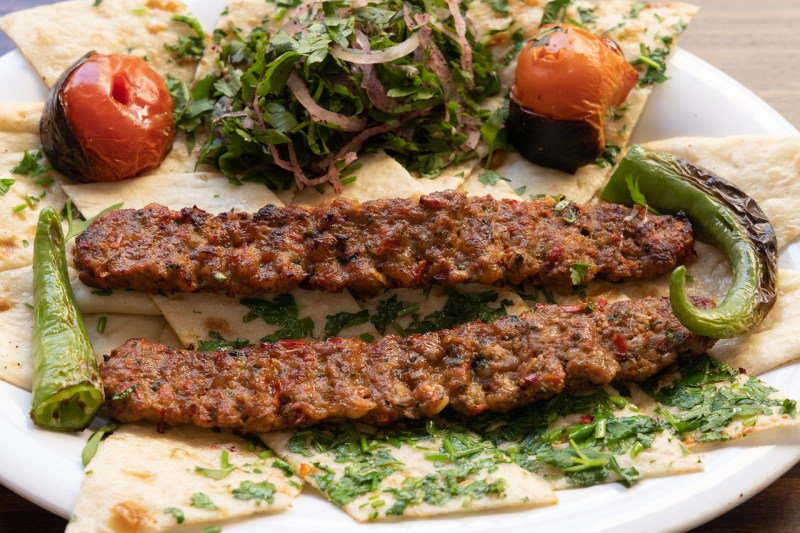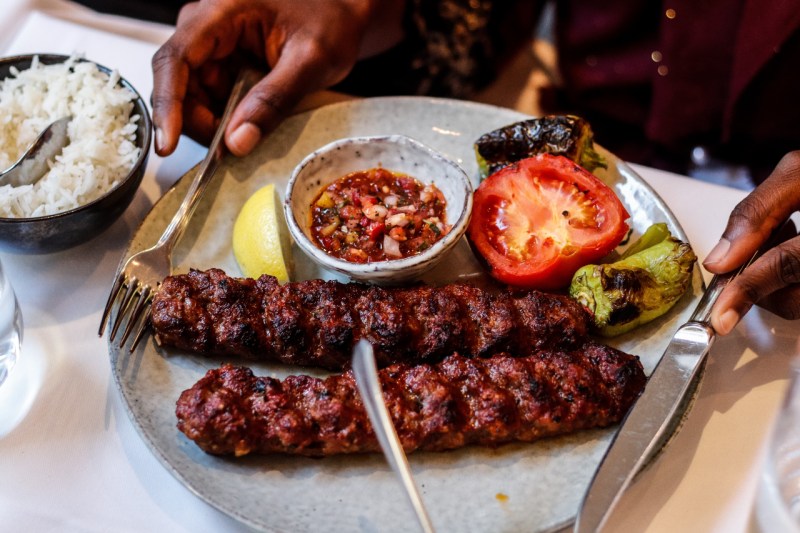In the Middle East, there are countless varieties of grilled and skewered meats. Many of these kebabs are made with ground meat, ranging from the parsley-rich kofta kebab of Lebanon to the soft and savory koobideh kebab of Iran. One of the most famous of these styles is the Adana kebab, a spicy Turkish lamb mince fragrant with chili peppers. Is your mouth watering yet? Keep reading to learn more about Adana kebabs.
What is the Adana kebab?

The Adana kebab originated from the southern Turkish city of Adana. A proper Adana kebab is serious business in Turkey — the dish is officially a protected designation of origin (PDO). Essentially, this means that a true Adana kebab can only be made in the city of Adana and only by someone who has cleared a series of rules.
First, these Turkish kebabs should be made from a male lamb less than a year old. The meat is chopped by hand with a crescent-shaped cleaver called a zırh and mixed with lamb tail fat. The fat content should be around 1/5 of the total mixture. This process of hand-chopping and mixing produces a texture that’s very different from mixing by machine. For seasoning, sweet red peppers, spicy green chilis, garlic, purple sumac, and salt are added to the meat mixture. Ideally, the meat should be left overnight to fully develop all the flavors.
For grilling, Adana kebabs are kneaded onto a broad metal skewers shaped like a sword. Be sure to wet your hands beforehand — this will help the meat maintain its shape on the metal skewer. An authentic Adana kebab will be grilled over hardwood coals and turned frequently. As it grills, cooks will also periodically wipe pieces of flatbread on the meat to collect the savory fat drippings.
Adana kebab accompaniments

Adana kebabs are usually served on a plate or in a wrap, both with Turkish flatbread. The flatbread has the added bonus of soaking up the salty and fatty meat drippings, enhancing the bread. Grilled vegetables like tomatoes, green and red peppers, and a salad of thinly sliced raw onions with parsley and sumac are common. These elements help balance the spicy meat of the kebab.
Turkish cuisine is all about a variety of flavors and textures. Central to this concept are the plentiful side dishes and accompaniments called meze. These can include exciting items like a red pepper paste mixed with fruity pomegranate molasses, mint and tarragon or a variety of pickled vegetables and chili peppers.
Turkish-style Adana kebabs

(By Executive Chef Ari Bokovza of Dagon)
Dagon is a thrilling restaurant in New York City that showcases cuisine from “somewhere in the Mediterranean.” Named for the Phoenician and Philistine god of agriculture and the earth, Dagon’s food combines modern Israeli cuisine with Levantine influences from the Middle East.
Ingredients
- 1 pound ground lamb
- 5 ounces lamb or beef fat
- 5 ounces minced white onion
- 1/2 ounce minced garlic
- 1/2 ounce chopped parsley
- 1/2 ounce chopped cilantro
- 2 ounces harissa
- Small pinch chili flake
- Salt to taste
- 2 ounces panko breadcrumbs
- 1 egg
- 2 teaspoons sumac
Method
- Mix all ingredients together in a large mixing bowl. Cover and let sit overnight in the refrigerator.
- To prepare, wet your hands and mold the meat mixture into the desired shape.
- Prepare a charcoal grill and cook meat quickly over hot coals, turning often, about every 6 to 8 minutes, depending on the size of the kebabs. If a grill is unavailable, a cast-iron skillet will suffice.
- Serve hot with rice or flatbread and grilled vegetables.
Additional tips

Here are some tips to elevate your Adana kebab dining experience.
- Ensure the kebabs are cooked through but still juicy. Rest them briefly after grilling to redistribute the juices for maximum flavor.
- Pair the kebabs with refreshing drinks like ayran (a yogurt-based drink) or şalgam (a spicy fermented turnip juice) to complement the richness of the meat.
- Prepare a small bowl of olive oil with a squeeze of lemon juice for dipping the pita bread. This adds a touch of freshness and moisture.




